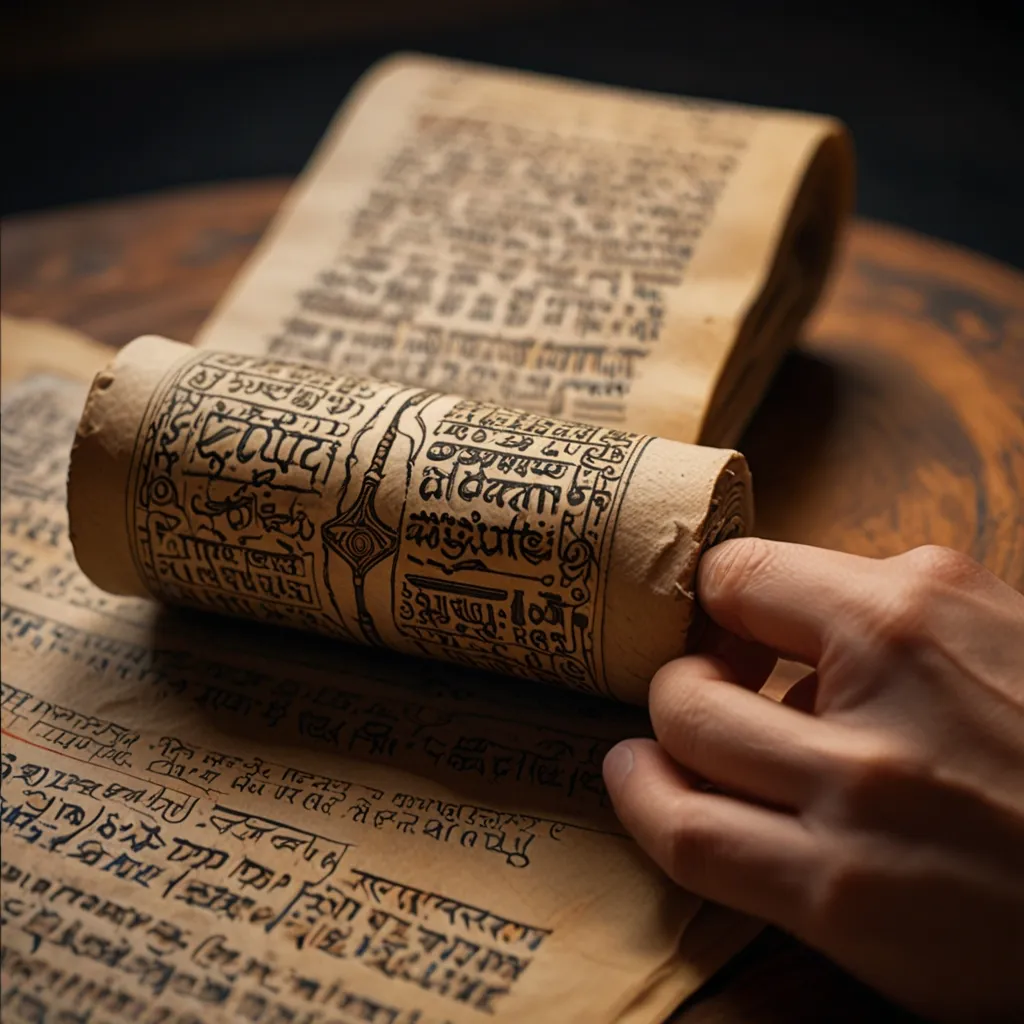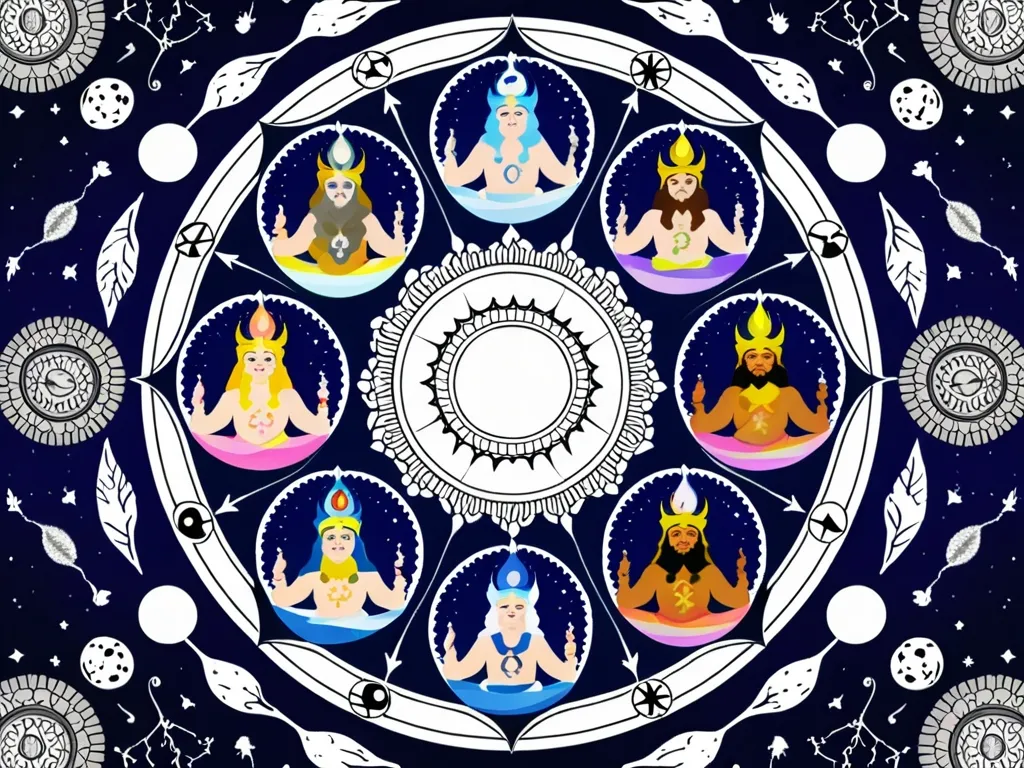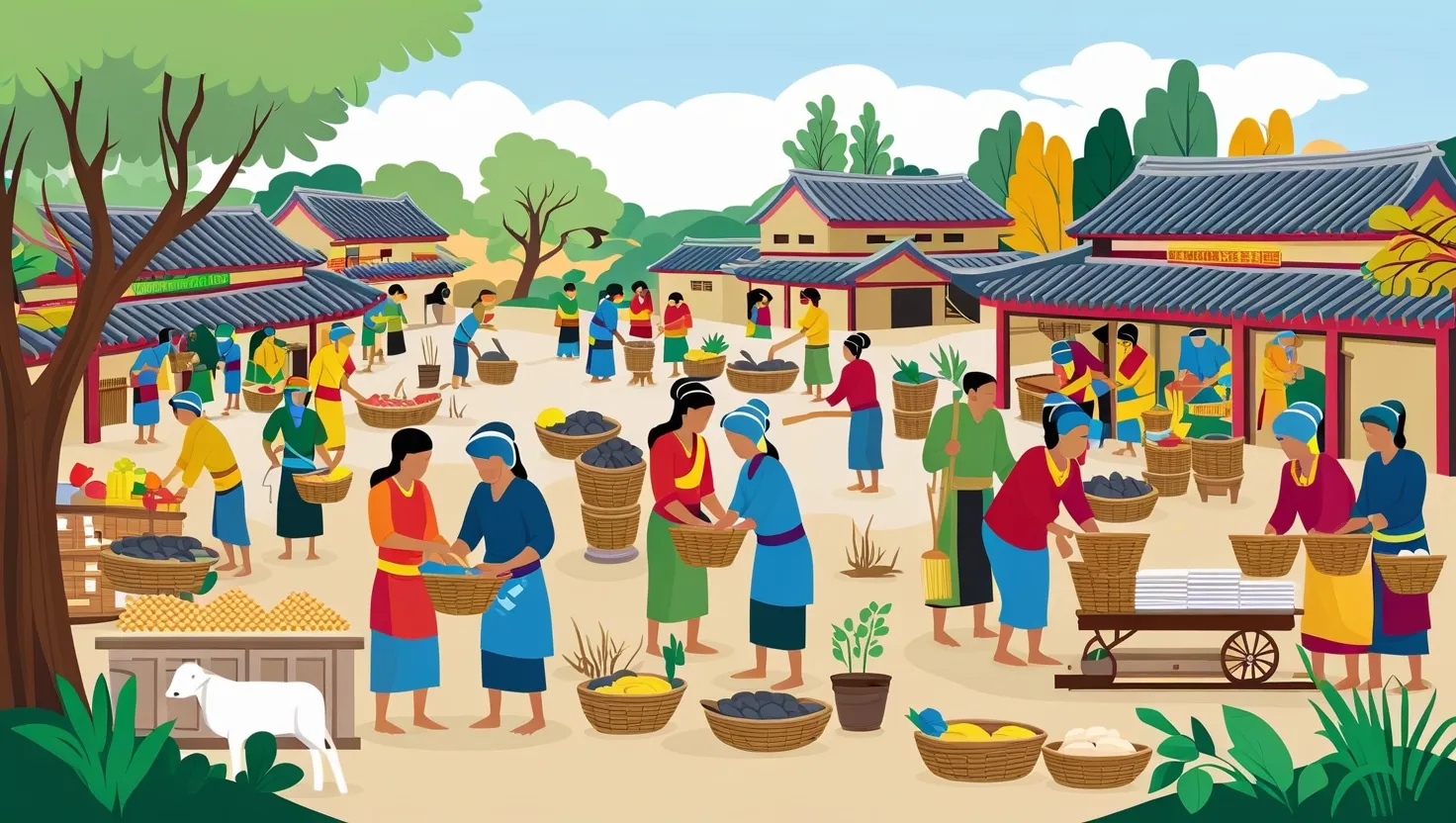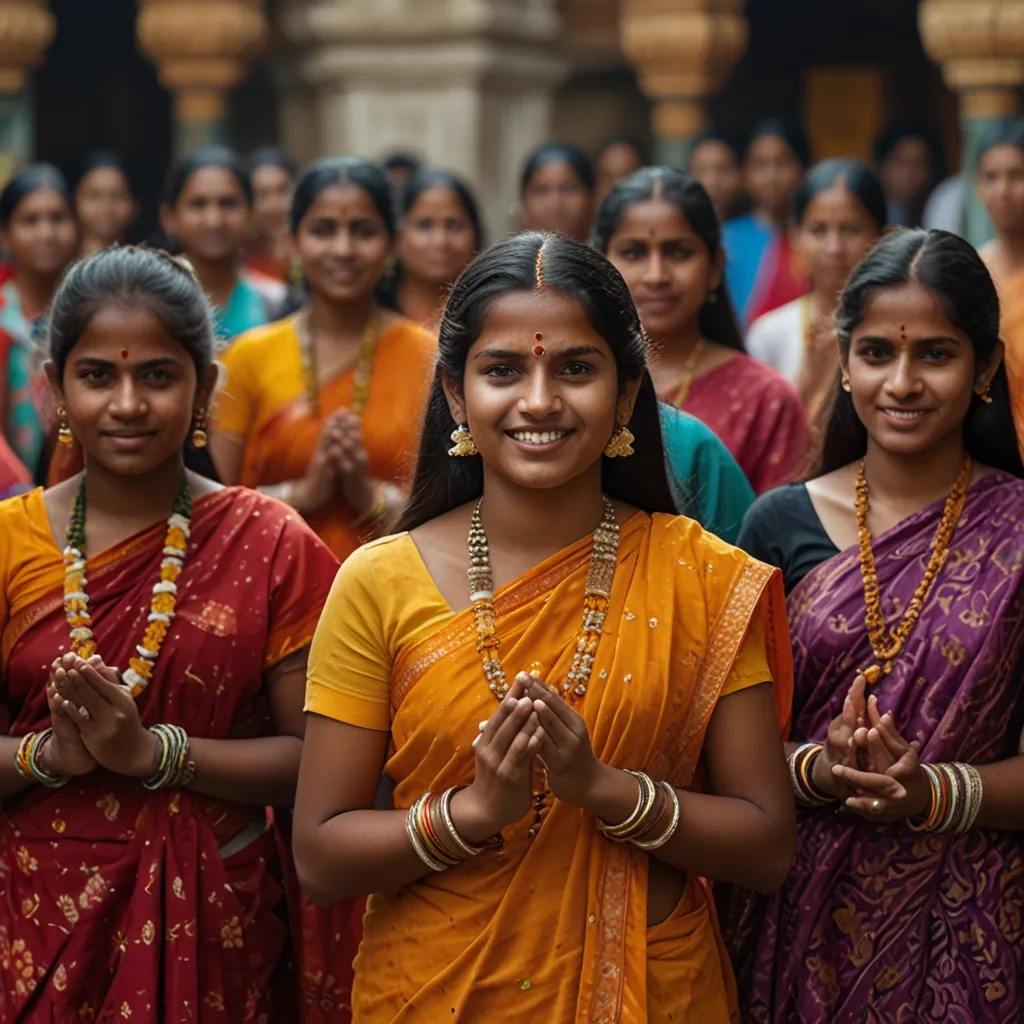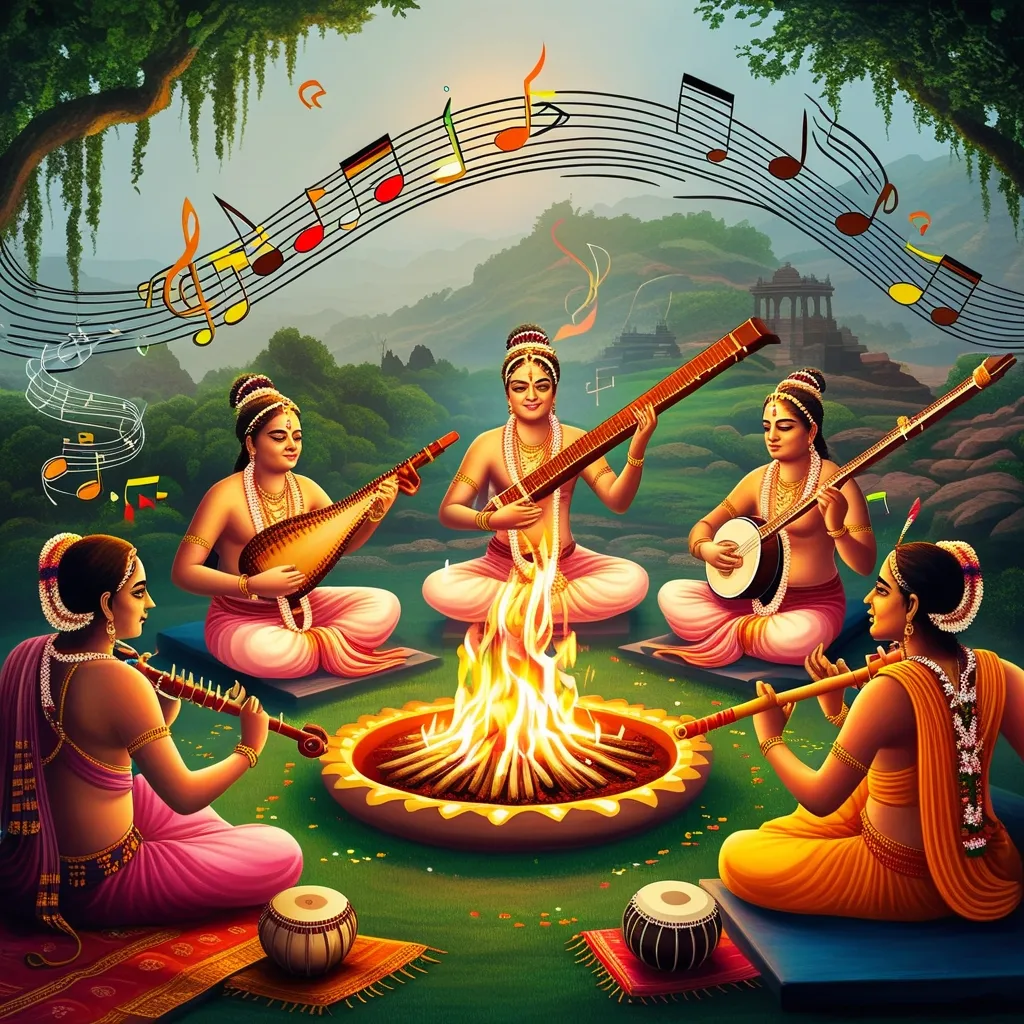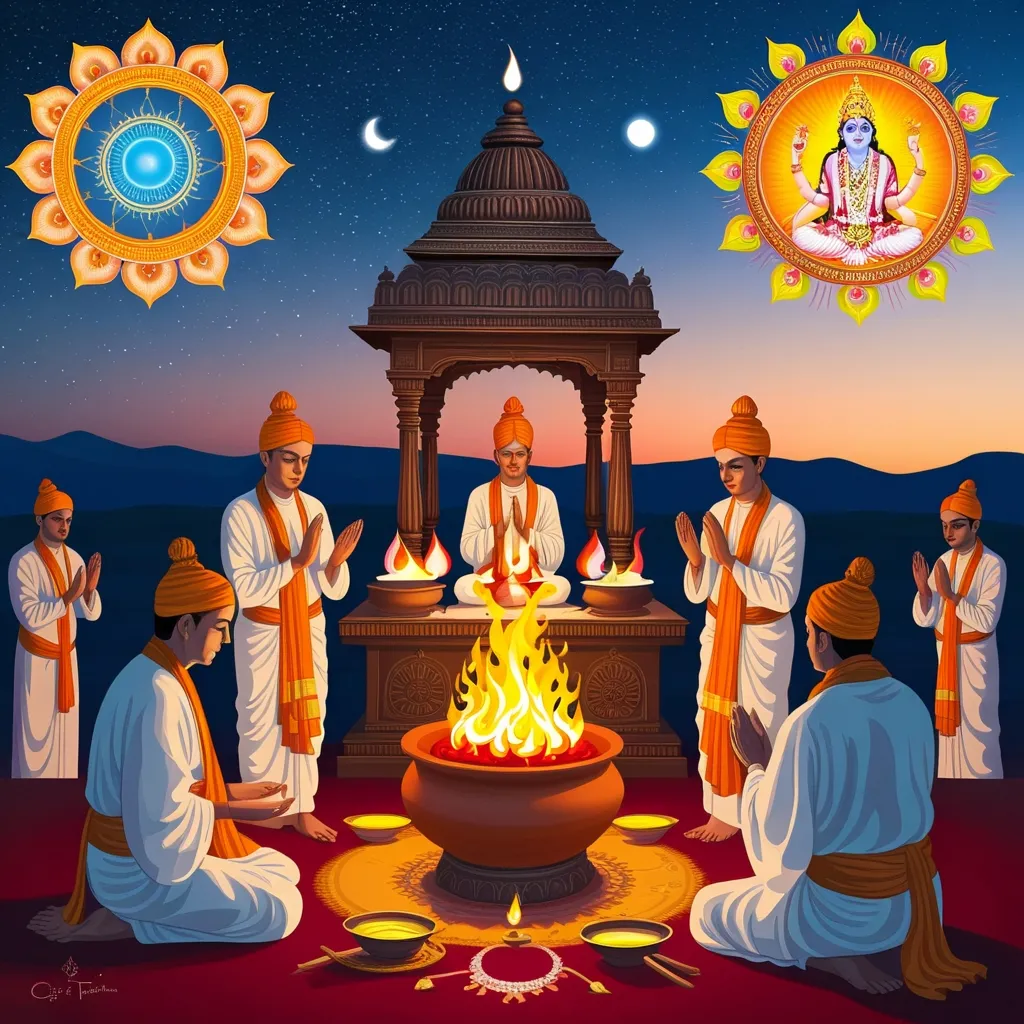The Vedas are some of the oldest and most sacred texts in Hinduism, a faith that began in the Indian Subcontinent. These ancient scriptures lay the foundation of Hindu traditions and are revered for their deep wisdom and spiritual guidance. The word “Veda” translates to “knowledge,” reflecting their role in conveying fundamental truths about existence.
Composed in Vedic Sanskrit between 1500 and 500 BCE, the Vedas were initially passed down orally through generations. This meticulous oral tradition ensured that the exact pronunciation and intonation were preserved, which was considered vital for their spiritual impact. The Vedas are grouped into four main collections: the Rig Veda, the Sama Veda, the Yajur Veda, and the Atharva Veda.
The Rig Veda is the oldest and most significant, featuring 1,028 hymns divided into 10 mandalas. These hymns cover various aspects of life, addressing religious rites, philosophical musings, and the natural world. The Sama Veda largely focuses on hymns related to religious rituals, while the Yajur Veda provides detailed instructions for performing these rituals. The Atharva Veda is a bit different, containing spells and incantations for protection against enemies, sorcery, and illnesses.
Each Veda is divided into several sections: Samhitas, Brahmanas, Aranyakas, and Upanishads. Samhitas are collections of hymns and mantras, Brahmanas offer commentary on rituals, Aranyakas discuss rituals and observances, and Upanishads delve into deeper philosophical questions. These texts are known as Shruti, meaning “what is heard,” and are believed to be divine revelations.
The Vedas describe numerous gods and goddesses, each overseeing different natural forces and abstract qualities. For instance, Agni is the god of fire, Surya is the sun god, and Indra is the god of storms. These deities play a central role in the religious practices and rituals outlined in the Vedas.
The roots of the Indian caste system can also be traced back to the Vedas, particularly a story in the Rig Veda about the sacrifice of the deity Purusha. According to this tale, different castes emerged from different parts of Purusha’s body. While the Vedas are ancient, their influence on modern Hindu practices remains strong.
Preserving the Vedas has been a meticulous process. Students memorized and recited them both forwards and backwards to ensure their accuracy. This oral tradition has lasted for centuries, with priests and scholars continuing to recite the Vedas with precise intonation and rhythm.
Beyond their religious significance, the Vedas offer a wealth of cultural and historical information. They give us insights into the lives, beliefs, and practices of the ancient Indo-Aryan people. As such, the Vedas are not just religious texts but also valuable records of early Indian civilization.
For those interested in delving into the Vedas, starting with the principal Upanishads is often recommended before exploring the other texts. Learning Sanskrit is key to truly understanding the Vedas, as translations, while helpful, often miss the full depth and meaning of the originals.
In essence, the Vedas are a treasure trove of knowledge and wisdom, providing profound insights into existence, the universe, and human life. They continue to inspire and guide millions of Hindus worldwide.
